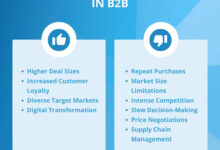B2B Meaning: 7 Powerful Insights You Must Know
Ever wondered what exactly ‘b2b meaning’ stands for and why it’s reshaping how companies do business? It’s not just jargon—it’s the backbone of global commerce, connecting businesses in ways that drive innovation, efficiency, and growth. Let’s break it down.
Understanding the Core B2B Meaning

The term b2b meaning refers to ‘business-to-business’—a model where companies sell products or services to other businesses rather than to individual consumers. This model underpins vast sectors of the global economy, from manufacturing to software solutions. Unlike B2C (business-to-consumer), B2B transactions are typically larger, more complex, and involve longer sales cycles.
What Does B2B Stand For?
B2B stands for business-to-business, a commercial transaction between two companies. For example, a software company selling CRM tools to a marketing agency operates under the B2B model. These relationships are often built on contracts, negotiations, and long-term partnerships.
- Transactions occur between organizations, not individuals.
- Sales are often based on logic, ROI, and efficiency rather than emotion.
- Decision-making involves multiple stakeholders.
Historical Evolution of B2B
The concept of B2B isn’t new. Long before the internet, manufacturers supplied raw materials to producers. However, the digital revolution transformed B2B by enabling faster communication, e-commerce platforms, and data-driven decision-making. The rise of ERP systems and cloud-based tools has further streamlined operations.
“B2B has evolved from handshake deals to algorithm-driven marketplaces.” — Harvard Business Review
B2B Meaning in Modern Business Ecosystems
Today, the b2b meaning extends beyond simple transactions. It encompasses digital marketplaces, supply chain integrations, and strategic alliances. Companies like Salesforce, SAP, and Alibaba dominate the B2B space by offering scalable solutions that meet enterprise needs.
Key Characteristics of B2B Transactions
B2B interactions are defined by several distinct features:
- High Order Values: Purchases are often bulk or long-term, leading to higher contract values.
- Longer Sales Cycles: Multiple approvals, legal reviews, and technical evaluations slow down decisions.
- Relationship-Driven: Trust and reliability are critical. Long-term contracts are common.
- Customized Solutions: Products or services are often tailored to client specifications.
B2B vs. B2C: Key Differences
While both models involve selling, the b2b meaning diverges significantly from B2C:
- Audience: B2B targets businesses; B2C targets individual consumers.
- Marketing Approach: B2B uses LinkedIn, whitepapers, and webinars; B2C relies on social media, ads, and influencers.
- Purchasing Motivation: B2B decisions are rational and ROI-focused; B2C is often emotional or impulse-driven.
- Customer Volume: B2B has fewer but higher-value clients; B2C has mass markets.
The Role of Technology in Shaping B2B Meaning
Technology has redefined the b2b meaning by enabling automation, data analytics, and digital platforms. Cloud computing, AI, and SaaS (Software as a Service) have made it easier for businesses to collaborate and scale.
Impact of E-Commerce on B2B
Online B2B marketplaces like Alibaba and Amazon Business have revolutionized procurement. Companies can now source globally, compare prices, and automate ordering—all through digital platforms.
- 24/7 accessibility to suppliers.
- Transparent pricing and reviews.
- Integration with inventory and accounting systems.
AI and Automation in B2B Operations
Artificial Intelligence is streamlining B2B processes from lead generation to customer support. Chatbots handle inquiries, predictive analytics forecast demand, and machine learning optimizes pricing strategies.
“AI-driven B2B platforms can reduce operational costs by up to 30%.” — McKinsey & Company
B2B Meaning Across Industries
The b2b meaning varies across sectors, but the core principle remains: one business serving another. Let’s explore how different industries apply this model.
Manufacturing and Supply Chain
In manufacturing, B2B is fundamental. A car manufacturer buys steel from a supplier, electronics from another, and tires from a third. These relationships are critical for production continuity.
- Just-in-time (JIT) inventory systems rely on B2B coordination.
- Long-term contracts ensure supply stability.
- Digital procurement platforms reduce delays.
Technology and SaaS
The tech industry thrives on B2B. Companies like Microsoft, Zoom, and Slack provide tools that other businesses use daily. SaaS models allow for subscription-based revenue and continuous updates.
- Scalable pricing tiers (e.g., per user, per feature).
- API integrations with other business tools.
- Focus on security and compliance (e.g., GDPR, HIPAA).
Healthcare and Pharmaceuticals
Hospitals purchase medical equipment from manufacturers, and pharmacies source drugs from distributors. These B2B relationships are highly regulated and require strict quality control.
- Regulatory compliance is non-negotiable.
- Long approval processes for new products.
- Emphasis on reliability and traceability.
Marketing Strategies Rooted in B2B Meaning
Understanding the b2b meaning is crucial for crafting effective marketing strategies. Unlike B2C, B2B marketing focuses on building trust, demonstrating value, and nurturing long-term relationships.
Content Marketing in B2B
High-quality content like whitepapers, case studies, and webinars positions a company as an industry leader. For example, HubSpot’s educational content attracts thousands of business clients monthly.
- Content addresses pain points and offers solutions.
- SEO-optimized blogs improve visibility.
- Lead magnets (e.g., free trials, e-books) capture contact info.
Account-Based Marketing (ABM)
ABM targets specific high-value accounts with personalized campaigns. Instead of broad outreach, marketers engage decision-makers directly through tailored messaging.
- Identifies key stakeholders (e.g., CTO, CFO).
- Uses personalized emails, ads, and events.
- Aligns sales and marketing teams for better conversion.
Social Media and LinkedIn Strategy
LinkedIn is the go-to platform for B2B marketing. Companies use it to share thought leadership, post job openings, and connect with potential clients.
- Professional networking drives lead generation.
- LinkedIn Ads target by job title, industry, and company size.
- Engagement through comments and articles builds credibility.
Challenges in the B2B Landscape
Despite its advantages, the b2b meaning comes with challenges. Long sales cycles, complex decision-making, and intense competition require strategic planning.
Lengthy Decision-Making Processes
B2B purchases often involve multiple departments—finance, IT, operations—each with its own requirements. This slows down approvals and increases the risk of deal collapse.
- Solution: Provide clear ROI calculators and pilot programs.
- Offer demos and free trials to reduce perceived risk.
- Assign dedicated account managers to guide clients.
Customer Retention and Churn
Retaining B2B clients is harder than acquiring them. A single service failure can lead to contract termination.
- Implement proactive customer success teams.
- Use feedback loops to improve offerings.
- Offer loyalty incentives and contract renewals.
Global Competition and Pricing Pressure
With digital platforms, businesses face global competition. A company in Germany can easily compare prices with suppliers in India or Brazil.
- Differentiate through quality, service, or innovation.
- Leverage automation to reduce costs.
- Build brand authority to justify premium pricing.
Future Trends Redefining B2B Meaning
The b2b meaning is evolving with technological and societal shifts. From sustainability to AI-driven personalization, the future of B2B is dynamic and data-centric.
Rise of Subscription-Based B2B Models
More companies are adopting subscription models for software, equipment, and even raw materials. This ensures predictable revenue and deeper customer engagement.
- Examples: Adobe Creative Cloud, Rolls-Royce’s ‘Power by the Hour’ jet engine service.
- Encourages ongoing support and upgrades.
- Improves customer lifetime value (CLV).
Sustainability and Ethical Sourcing
Businesses are increasingly evaluated on their environmental and social impact. B2B partners now demand sustainable practices, from carbon-neutral shipping to fair labor policies.
- Green certifications (e.g., ISO 14001) enhance credibility.
- Supply chain transparency is a competitive advantage.
- Investors favor ESG-compliant B2B companies.
Hyper-Personalization Through Data Analytics
Advanced analytics allow B2B companies to tailor offerings at scale. By analyzing usage patterns, businesses can recommend upgrades, predict churn, and customize pricing.
- AI-driven insights improve customer experience.
- Dynamic pricing models adapt to market demand.
- Personalized onboarding increases adoption rates.
How to Build a Successful B2B Business Model
Understanding the b2b meaning is just the start. Building a thriving B2B company requires a strategic approach to value creation, customer engagement, and operational efficiency.
Define Your Target Market Clearly
Not all businesses are your customers. Identify your ideal client profile (ICP) based on industry, company size, revenue, and pain points.
- Use market research and customer interviews.
- Analyze competitors to find gaps.
- Segment your audience for targeted messaging.
Develop a Value Proposition That Resonates
Your value proposition should clearly state how your product solves a business problem better than alternatives.
- Focus on ROI, efficiency gains, or risk reduction.
- Use real-world case studies to prove impact.
- Communicate benefits in business terms (e.g., ‘reduces downtime by 40%’).
Invest in Customer Success
In B2B, the sale is just the beginning. Customer success teams ensure clients achieve their goals, leading to renewals and referrals.
- Onboard clients with training and support.
- Monitor usage and proactively address issues.
- Regular check-ins build trust and uncover upsell opportunities.
What is the basic b2b meaning?
The basic b2b meaning is ‘business-to-business,’ referring to transactions between two companies. For example, a software firm selling tools to a financial institution operates under the B2B model. It contrasts with B2C, where businesses sell directly to consumers.
How does B2B differ from B2C?
B2B involves longer sales cycles, rational decision-making, and higher transaction values compared to B2C. Marketing in B2B is more relationship-driven and uses channels like LinkedIn and email, while B2C relies on emotional appeal and mass media.
What are common B2B industries?
Common B2B industries include manufacturing, IT services, SaaS, healthcare supply, logistics, and wholesale distribution. Any sector where companies provide goods or services to other businesses falls under B2B.
Why is customer success important in B2B?
Customer success ensures clients derive maximum value from a product, leading to contract renewals and referrals. In B2B, where contracts are long-term and high-value, retention is more profitable than acquisition.
What role does technology play in modern B2B?
Technology enables automation, data analytics, e-commerce platforms, and AI-driven personalization in B2B. It streamlines procurement, enhances customer experience, and supports scalable growth.
Understanding the b2b meaning is essential for anyone involved in modern business. From its foundational principles to its digital transformation, B2B is a dynamic and powerful model that drives global commerce. Whether you’re launching a startup or scaling an enterprise, mastering B2B strategies—from marketing to customer success—can unlock sustainable growth. As technology and market demands evolve, so too will the ways businesses connect, collaborate, and create value. The future of B2B isn’t just about selling; it’s about building ecosystems of trust, innovation, and mutual success.
Further Reading:




